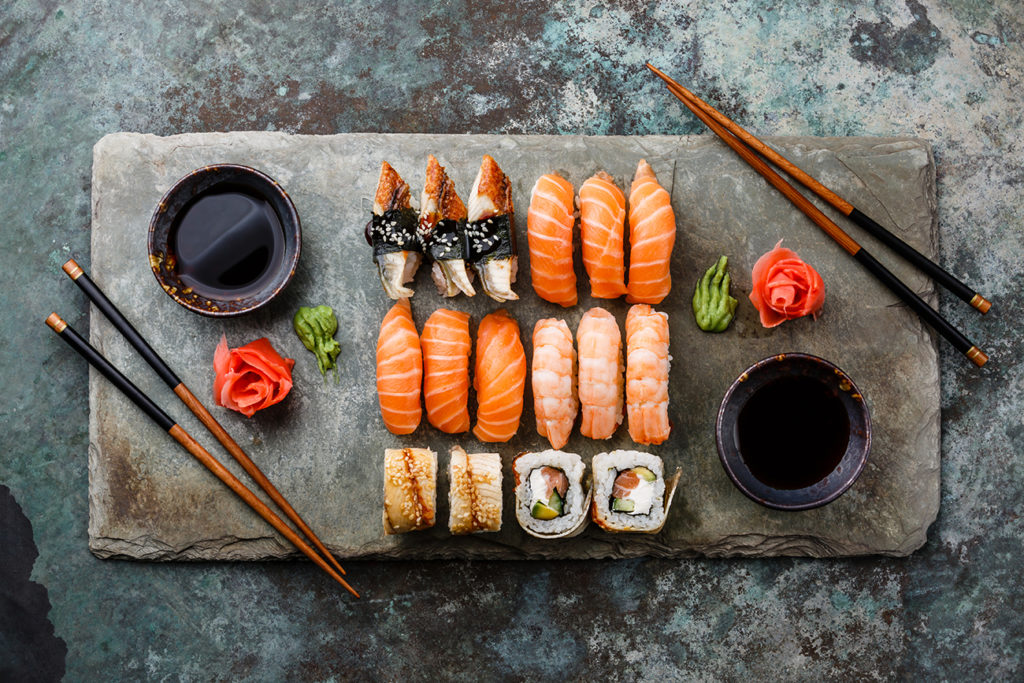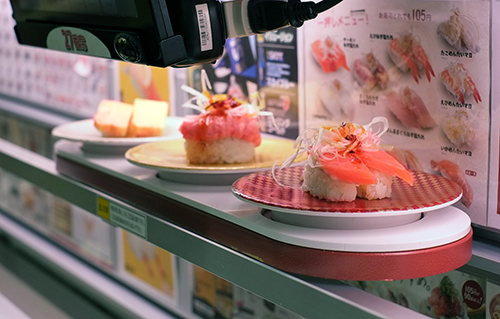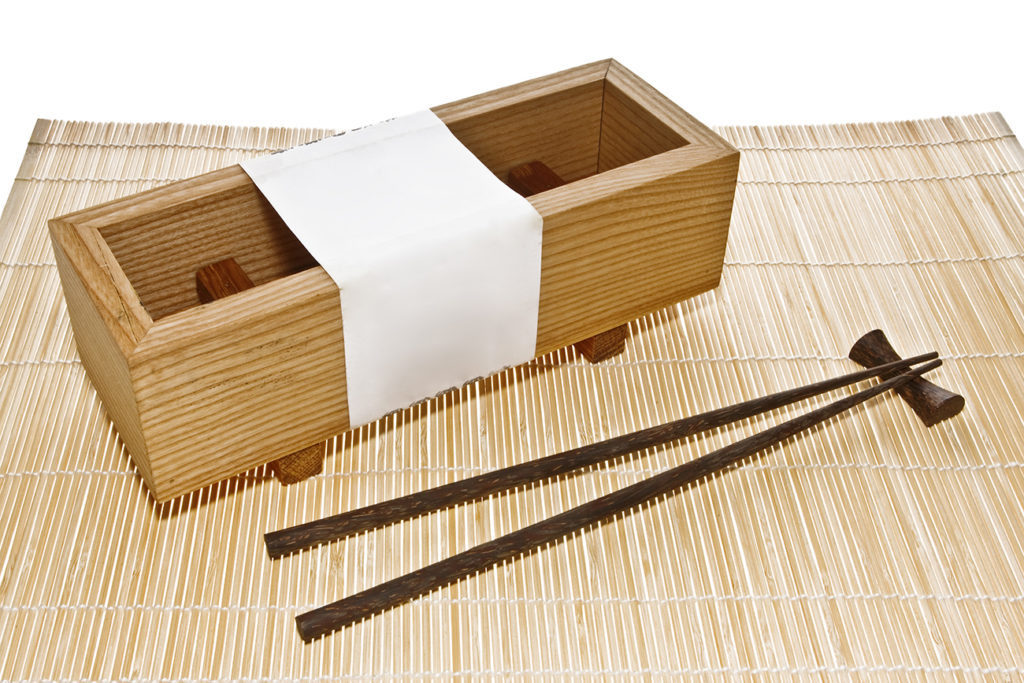
Sushi 101
Sushi (すし, 寿司, 鮨) usually consists of cooked rice mixed with vinegar and sweet sake, raw or cooked seafood, seaweed, and vegetables. The ingredients and presentation vary but sushi always contains rice. Raw fish or other types of meat that are sliced and served without rice is called sashimi. Sushi is often served with a daikon garnish, wasabi, soy sauce, and shredded ginger.
 Sushi. | KCP Flickr
Sushi. | KCP Flickr
There are several types of sushi depending on the ingredients and how it is prepared. Sushi should be spelled with a z when a prefix is added, a common practice in the Japanese language and morphonology known as rendaku, such as observed in the names of the types of sushi, some of which are:
Makizushi – “rolled sushi,” a cylindrical shaped sushi wrapped in seaweed (nori), formed with a bamboo mat, and cut into six or eight pieces.
Chirashizushi – “scattered sushi,” a bowl of sushi rice topped with various ingredients such as raw fish, vegetables, and garnishes. The ingredients used depends on the chef, customer, or what’s available in the region.
Sushi wooden press.
Oshizushi – “pressed sushi” originating from the Kansai region of Osaka where a wooden mold is used to form a block-shaped compact piece of sushi which is then cut into bite-sized pieces.
Oshizushi wooden press (oshizushihako.) | Chris 73
Inarizushi – usually made with a thin slice of fried tofu shaped like a pouch and filled with sushi rice. It is named after the Shinto god Inari who is believed to be fond of fried tofu.
Narezushi – a type of traditional fermented sushi.
There is also the proper way to enjoy eating sushi. Here are some tips on sushi etiquette:
Make sure your hands are clean. Most restaurants in Japan provide hot, moist towels for this very reason because it is acceptable to eat sushi with your fingers aside from chopsticks. But it is always best to have clean hands when eating especially if you are sharing an order of sushi with friends.
Wasabi is not mixed with soy sauce in the dipping bowl. The sushi chef usually already adds wasabi to the sushi. For some who prefer more wasabi, the proper way would be to add it directly on the fish. Putting a lot of wasabi is said to diminish the flavor of the fish.
Dip only the fish in the soy sauce, not the rice. If you are having nigirizushi, you can tip the piece onto its side to make it easier to dip just the fish. This also ensures that the piece won’t get too soaked in soy sauce and will stay together.
Eat sushi in one bite, or two at the most. Notice all the different flavors that may be mild but come together in a burst of delicious freshness.
Refresh your taste buds with ginger in between bites. Each type of fish has its own distinct flavor. In order to best savor each individual ingredient, you can cleanse your palate to prepare your taste buds for the next delectable bite.
Learn how to eat sushi properly with this YouTube video by Munchies:
